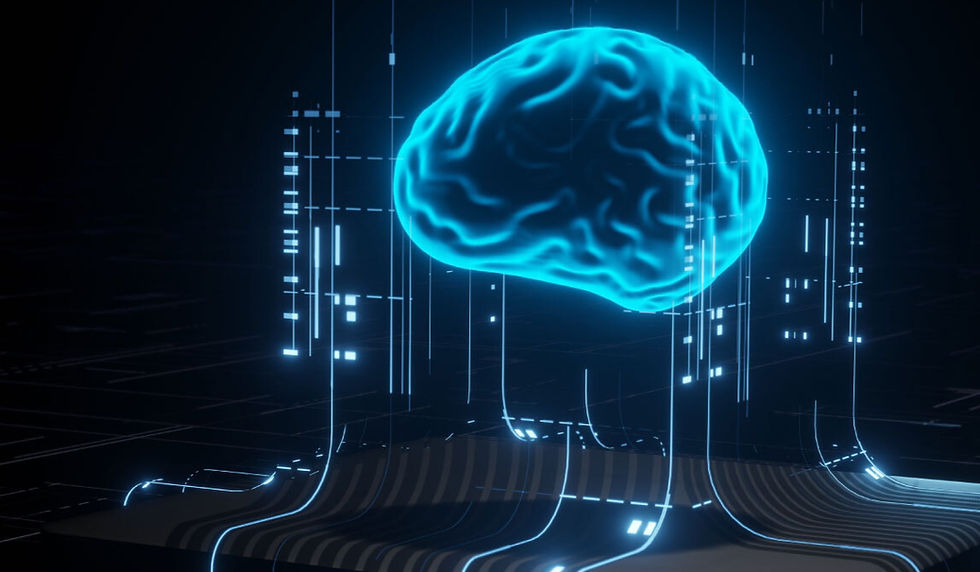Demystifying Machine Learning A Beginner's Guide
- AI Improve Tools
- Aug 21
- 5 min read
Machine learning is a hot topic today, and it’s often mentioned in conversations about technology, data science, and artificial intelligence. However, many people find this concept confusing or intimidating.

This guide aims to break down machine learning in simple terms, providing a straightforward introduction for those new to the field.
What is Machine Learning?
At its simplest, machine learning is a part of artificial intelligence that allows computers to learn from data. Instead of being programmed with fixed rules, machines identify patterns and make predictions based on the data they receive. According to a report from McKinsey, machine learning could drive an additional $13 trillion in global economic activity by 2030.
Machine learning comes in three main types: supervised learning, unsupervised learning, and reinforcement learning. Each type has unique characteristics and applications.
Supervised Learning
In supervised learning, the algorithm is trained on a labeled dataset where input data is matched with correct outputs. The goal is for the model to learn the relationship between the two so it can make accurate predictions on new, unseen data.
Examples of supervised learning include:
Spam detection: Algorithms classify emails as spam or not based on labeled examples, improving accuracy rates to over 99% in some cases.
Image recognition: Systems recognize objects in images, such as identifying cats in photos, with accuracy that can exceed 95% when trained on large datasets.
Predictive analytics: Businesses use historical data to forecast trends, leading to improved sales predictions. For instance, companies that utilize predictive analytics have seen a 10% to 20% increase in sales.
Unsupervised Learning
Unsupervised learning works with unlabeled data. The algorithm tries to find patterns without any prior knowledge of outcomes. This type of learning is useful for clustering and discovering hidden insights.
Applications of unsupervised learning include:
Customer segmentation: Retailers group customers based on purchasing behaviors. Amazon, for example, employs this method to suggest products, boosting sales by 30% from targeted recommendations.
Anomaly detection: Systems detect unusual patterns, such as fraudulent transactions, which can decrease financial losses by as much as 50%.
Recommendation systems: Streaming services like Netflix analyze viewing habits to suggest movies and shows, increasing user engagement by over 80%.
Reinforcement Learning
Reinforcement learning trains an agent to make decisions by performing actions in an environment to maximize cumulative rewards. The agent receives feedback in the form of rewards or penalties, helping it learn from its actions.
Common applications of reinforcement learning include:
Game playing: AI systems have been trained to play chess and Go, often defeating human champions. For instance, DeepMind's AlphaGo beat the world champion Go player in 2016.
Robotics: Robots learn to navigate complex environments. For example, Boston Dynamics uses reinforcement learning to improve their robots' ability to adapt to different terrains.
Autonomous vehicles: Self-driving cars make real-time decisions based on sensor input. Companies like Waymo have tested their technology, reporting a 94% success rate in navigating through urban areas.
How Does Machine Learning Work?
Machine learning involves several key steps, which can be summarized as follows:
Data Collection: Gather relevant data from sources like databases, sensors, or user interactions.
Data Preprocessing: Clean and prepare the data, handling missing values and normalizing it for analysis.
Model Selection: Choose the right machine learning model based on data characteristics and desired outcomes.
Training the Model: Train the selected model using the prepared dataset. For instance, a healthcare model might be trained on thousands of patient records.
Evaluation: Assess the model's performance using metrics like accuracy and recall. A model with 90% accuracy is typically considered effective.
Deployment: Once validated, deploy the model into real-world applications, like predicting customer preferences.
Monitoring and Maintenance: Continuously monitor the model to ensure accuracy over time, adjusting as new data becomes available.
Real-World Applications of Machine Learning
Machine learning significantly impacts various industries, often enhancing efficiency and decision-making. Here are some notable applications:
Healthcare
In healthcare, machine learning assists in predictive analytics, patient diagnosis, and tailored treatment plans. Algorithms analyze medical records and imaging data, helping doctors improve diagnostic accuracy by up to 20%.
Finance
The finance sector employs machine learning for fraud detection, risk assessment, and algorithmic trading. By analyzing transaction behaviors, models can identify fraud with 95% accuracy, minimizing financial losses.
Retail
Retailers enhance customer experiences through personalized marketing powered by machine learning. By analyzing data, businesses can increase customer retention rates by 30%, adapting their offerings to meet buyer preferences.
Transportation
In transportation, machine learning optimizes routes, predicts traffic patterns, and increases safety. For example, ride-sharing apps use algorithms to efficiently match drivers with passengers, reducing wait times by 15%.
Challenges in Machine Learning
Despite its advantages, machine learning faces significant challenges:
Data Quality
The training data's quality is crucial. Poor-quality data can lead to unreliable predictions. It is vital to ensure data is representative and accurate to improve model reliability.
Overfitting and Underfitting
Overfitting happens when a model learns the training data too well, while underfitting occurs when a model is too simple to capture the data's complexities. Achieving a balance is key for optimal performance.
Interpretability
Complex models, especially deep learning, can be difficult to interpret. Understanding how predictions are made is essential, particularly in areas like healthcare where decisions can affect lives.
Ethical Considerations
As machine learning continues to grow, ethical issues like bias and privacy emerge. Algorithms must be fair and transparent to minimize harm and maintain trust.
Getting Started with Machine Learning
For beginners eager to explore machine learning, here are practical steps:
Learn the Basics
Start with online courses and tutorials that explain foundational concepts. Websites like Coursera, edX, and Udacity offer great resources for newcomers.
Choose a Programming Language
Python is the leading programming language for machine learning due to its user-friendly syntax and extensive libraries like TensorFlow and scikit-learn. R is also popular, particularly for statistical analysis.
Work on Projects
Gaining hands-on experience is essential. Start with small projects to practice, using public datasets available on platforms like Kaggle.
Join a Community
Networking with others in the machine learning field can provide valuable support and resources. Look for online forums, social media groups, and local meetups to connect with like-minded people.
Stay Updated
The field is rapidly evolving, with new research and techniques emerging frequently. Following industry blogs and attending conferences will keep you informed about the latest advancements.
The Path Forward in Machine Learning
Machine learning is a transformative technology with wide-reaching implications across numerous sectors. By understanding its basics, applications, and potential challenges, beginners can take their first steps into this dynamic field.
As technology continues to advance, the importance of machine learning will only increase. Whether enhancing your career or following your curiosity, grasping machine learning concepts is essential for navigating the future of technology and data. Dive in and explore the exciting possibilities that machine learning offers!





Comments